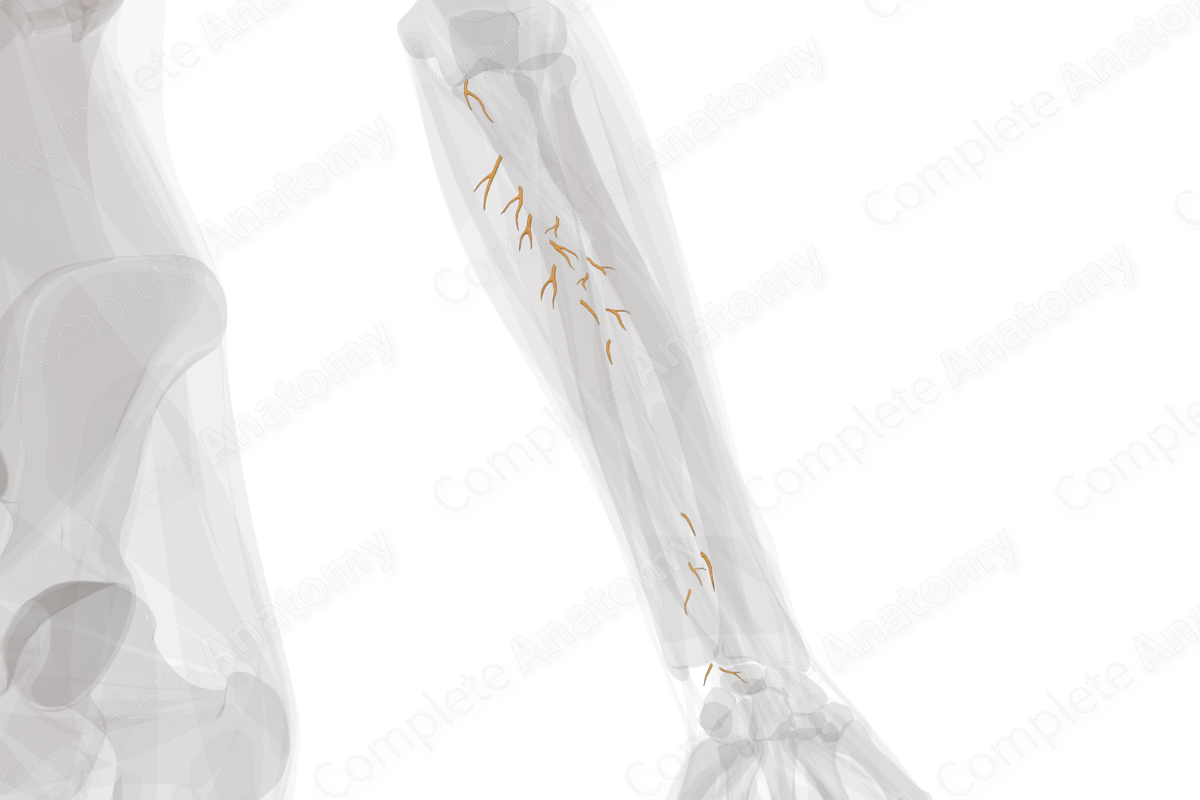
Muscular Branches of Median Nerve (Forearm; Left)
Rami musculares nervi mediani
Read moreDescription
The median nerve is formed by the union of lateral and medial cords of brachial plexus. It descends in the arm and crosses the brachial artery from its lateral to its medial side. The median nerve leaves the cubital fossa between the two heads of pronator teres and descends further deep to the flexor digitorum superficialis muscle. The nerve passes deep to the flexor retinaculum (transverse carpal ligament) to enter the palm where it divides into lateral and medial divisions.
Along its course, the median nerve gives off numerous muscular branches.
—In the axilla and arm: a muscular branch to the pronator teres muscle.
—In the cubital fossa: three muscular branches to flexor carpi radialis, flexor digitorum superficialis and palmaris longus muscles.
—In the forearm: the anterior antebrachial interosseous nerve innervates the deep muscles of the flexor compartment of the forearm, including flexor pollicis longus, the lateral half of the flexor digitorum profundus, and the pronator quadratus.
—In the palm: a lateral division supplies a muscular branch to the thenar muscles and three digital branches. Out of the three digital branches, two supply the thumb and one lateral side of the index finger. The digital branch to the index finger also innervates the first lumbrical. A medial division divides into two common digital branches for the second and third interdigital clefts, supplying the adjoining sides of the index, middle and ring fingers. The common digital branch for the second interdigital cleft also innervates the second lumbrical.
Related parts of the anatomy
Learn more about this topic from other Elsevier products
Median Nerve

The median nerve is a terminal branch nerve of the brachial plexus formed from the medial and lateral cords.




